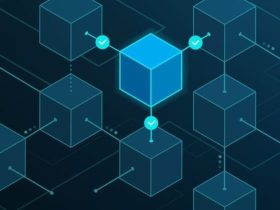This article explores the critical role of data observability in supporting AI and vector databases, highlighting its importance, benefits, and current trends.
Data observability, as defined by Monte Carlo, involves providing comprehensive visibility into the health of data and its systems. This is increasingly vital for the success of next-generation AI and Vector Databases, which have garnered more interest and adoption than Large Language Models (LLMs), according to Databricks. The primary objective is to ensure essential aspects such as data quality, lineage, schema, freshness, reliability, and performance across these advanced technologies.
AI heavily relies on high-quality data, as the effectiveness of AI models, particularly machine learning algorithms, hinges on the quality of the data used for training. Data observability tools play a crucial role in ensuring that data remains accurate, complete, and up-to-date. By monitoring data pipelines closely and identifying issues promptly, organizations can prevent AI systems from making decisions based on flawed or biased information.
As AI and vector databases become increasingly central to modern data ecosystems, the significance of data observability is poised to grow. Generative AI, in particular, relies on vast amounts of high-quality data. The AWS 2023 CDO Insights survey underscores data quality as a major barrier to fully harnessing generative AI’s potential.
Manual monitoring of data at the scale required by Large Language Models (LLMs) is impractical. Therefore, automated data observability solutions are essential. These tools ensure that data pipelines operate efficiently and reliably, thereby maintaining the dependability of AI systems. For instance, Monte Carlo prioritizes pipeline efficiency and resolution to uphold AI system reliability.
Think of data observability as the foundation of a house—it may not grab headlines, but without it, everything else risks collapse. Just as DevOps relies on vigilant monitoring for smooth software operations, DataOps hinges on robust observability to ensure the health of data pipelines.
Consider vector databases, crucial for powering AI applications. These databases demand meticulous management to perform optimally. Data observability provides critical insights needed to fine-tune query patterns, maintain index health, and allocate resources efficiently. It differentiates between a well-functioning vector database and one that becomes a bottleneck.
Real-time monitoring is another pivotal aspect. In today’s fast-paced business environment, swift detection and resolution of issues are imperative. Tools like Apache Kafka and Amazon Kinesis enable rapid response capabilities, allowing organizations to adapt quickly and preserve data integrity.
Compliance has also grown increasingly critical, with stringent regulations around AI and data usage. Observability tools play a pivotal role in tracking data lineage and usage patterns, fostering trust among users and stakeholders, not just avoiding penalties.
Most importantly, data observability drives continuous improvement. By providing insights into data quality and system performance, organizations can iteratively refine their AI models and database configurations. This ongoing optimization sets thriving tech enterprises apart from their peers.
As more organizations migrate to hybrid and multi-cloud environments, observability solutions are evolving accordingly. Cloud-native solutions are emerging to handle data from diverse sources, offering a unified view of an organization’s data ecosystem.
Companies that recognize the importance of data observability now will lead in the forthcoming AI revolution. It’s not just about deploying cutting-edge AI models; it’s about underpinning them with reliable, efficient, and compliant data infrastructure.
While data observability may not be the most glamorous topic in tech, its significance continues to grow. Startups and enterprises mastering this discipline will gain a substantial advantage in an increasingly AI-driven future. They will move faster, make smarter decisions, and build deeper trust with stakeholders.
In the dynamic tech landscape, staying informed about data observability trends is crucial. It’s about setting standards and continually enhancing systems. Mastery of data observability could well become the game-changing edge for companies in the years ahead.
Source: leadership.ng














Got a Questions?
Find us on Socials or Contact us and we’ll get back to you as soon as possible.